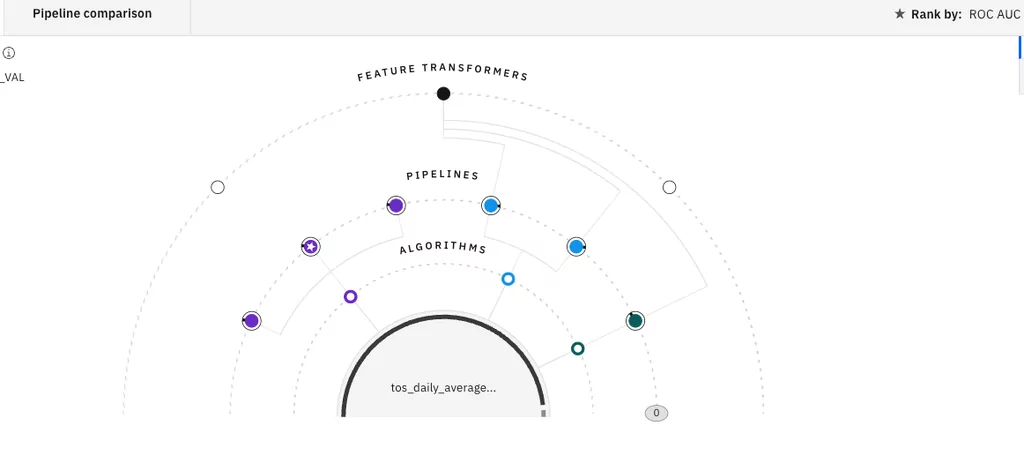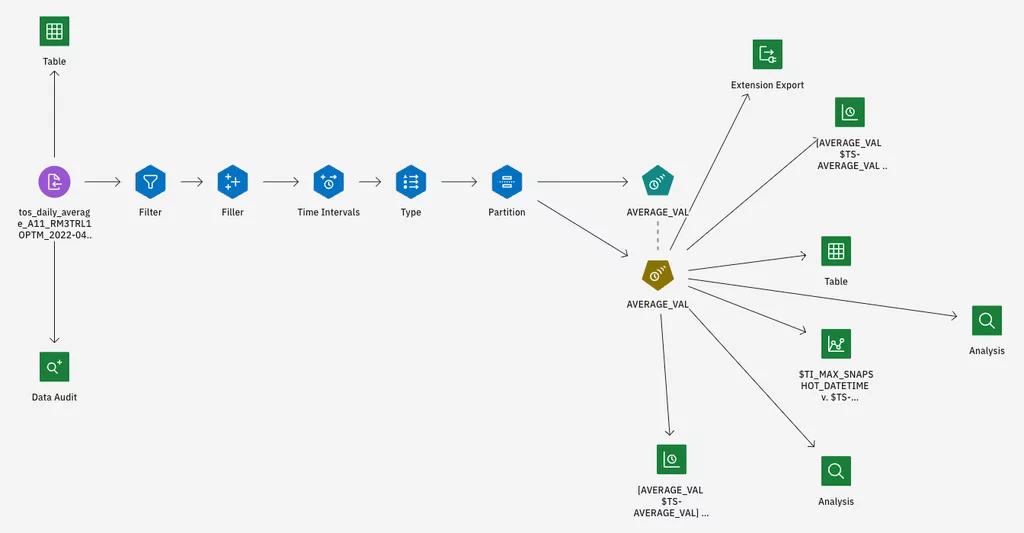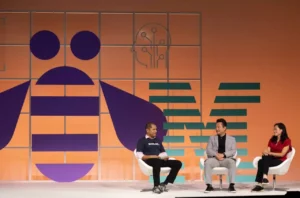
In the realm of urban transportation, precision is pivotal. Downer, a leading provider of integrated services in Australia and New Zealand, considers itself a guardian of the elaborate transportation matrix, and it continually seeks to enhance its operational efficiency. With over 200 trains and a multitude of sensors, Downer has accumulated a vast amount of data.
While Downer regularly uncovers actionable insights from their data, their partnership with IBM® Client Engineering aimed to explore the additional potential of this vast dataset, focusing on certain tools and methodologies that could streamline their analytic processes.
Fine-tuning data insights with enhanced collaboration and expertise
Downer continuously works to enhance operational efficiency, minimizing maintenance costs and impacts to transportation schedules. But Downer envisioned a partnership that would allow them to delve deeper into the data, unearthing more insights that could add value to operations. They combined forces with the experts at IBM to reach toward the expanding horizons of data science. IBM Client Engineering, with its principles of Lean Startup, pair programming and the IBM Value Engineering Method, ensured a worthwhile collaboration.

This collaborative effort was strengthened by IBM cross-team engagement, enablement and support with customer success managers, tech specialists and IBM Consulting®. Through a series of workshops and 2 sprints, Downer and IBM embarked on a journey of discovery and innovation. The companies collaborated to explore the possibility of expanding Downer’s capacity, aiming to accelerate the detection of transportation anomalies by at least 4 times within 4 weeks.
According to Yin Wong, Lead Data Scientist at Downer, “This is a step towards potential transformation—understanding what other tools and methods can drive deeper insights.”

No-code and low-code solutions for time series data exploration
IBM introduced Downer to the realm where no-code and low-code solutions could build predictive models to provide faster insights. Downer was able to streamline modeling times with watsonx.ai functionality (deployed on IBM Cloud®), making anomaly detection more efficient.
With SPSS Modeler flows and IBM AutoAI, Downer was able to rapidly develop predictive models that harness both business expertise and advanced time series forecasting and anomaly prediction techniques, allowing for the integration of these models into business operations to enhance decision-making processes.

Downer exceeded their goal and significantly decreased the time to detect faulty sensors from 2 months to 1 week. The focus was not on revolutionizing the process but presenting patterns to enhance and refine data analysis while making it available to those without expert domain knowledge.
The solutions enabled Downer to explore different models and refine their data investigation processes, emphasizing:
- Versatility: Downer was able to integrate diverse data sources and ensure uninterrupted data access.
- Speed and scalability: Downer efficiently adapted models to diverse data signals using tools like the Jupyter Notebook.
- User-friendly exploration: Downer found the model suggestions to be intuitive and helpful in generating insights, even for those who aren’t deeply rooted in data science.
Collaborators at Downer report high levels of satisfaction with the partnership. “These tools offer an array of analytics options. It’s about harnessing what aligns best with our needs and skills across our team,” says Yin Wong.
Also Downer’s RTS GM of Technology, Kes Gooding, recognized the potential for further operational enhancements, hinting at a deeper exploration of the suggestions.
Navigating the data landscape together
Through this collaboration, Downer and IBM Client Engineering showcased the potential outcomes when two enterprise giants collaborate, aiming for shared goals and enhanced data insights. In 4 weeks, they explored the expansive terrains of data-driven decision making, reiterating the importance of continuous exploration in today’s digital age.
Co-create with IBM experts to solve your most complex business challenges
More from Cloud

November 29, 2023
Best practices for hybrid cloud banking applications secure and compliant deployment across IBM Cloud and Satellite
10 min read – Financial Services clients are increasingly looking to modernize their applications. This includes modernization of code development and maintenance (helping with scarce skills and allowing innovation and new technologies required by end users) as well as improvement of deployment and operations, using agile techniques and DevSecOps. As part of their modernization journey, clients want to have flexibility to determine what is the best “fit for purpose” deployment location for their applications. This may be in any of the environments that Hybrid…

November 21, 2023
Level up your Kafka applications with schemas
4 min read – Apache Kafka is a well-known open-source event store and stream processing platform and has grown to become the de facto standard for data streaming. In this article, developer Michael Burgess provides an insight into the concept of schemas and schema management as a way to add value to your event-driven applications on the fully managed Kafka service, IBM Event Streams on IBM Cloud®. What is a schema? A schema describes the structure of data. For example: A simple Java class…

November 20, 2023
SSD vs. NVMe: What’s the difference?
7 min read – Recent technological advancements in data storage have prompted businesses and consumers to move away from traditional hard disk drives (HDDs) towards faster, lower-latency solid-state drive (SSD) technology. In this post, we’re going to look at this new technology, as well as the fastest and most popular protocol available to connect it to a computer’s motherboard—non-volatile memory express (NVMe). While the terms SSD and NVMe are often used to describe two different types of drives, they are actually different data storage…

November 20, 2023
Business leaders highlight the need for a hybrid cloud approach to unlock the power of generative AI
3 min read – In 2023, organizations have faced an unprecedented level of pressure to digitally transform with the rise of generative AI as well as imperatives such as sustainability, labor productivity and security. The “Cloud Transformation Report,” a new global survey from the IBM Institute for Business Value (IBV), found that many leading enterprises share a common foundation to digital transformation—a clear hybrid cloud strategy.¹ These businesses cite several key benefits to using a hybrid cloud approach to fuel business transformation, including modernization,…
IBM Newsletters
Get our newsletters and topic updates that deliver the latest thought leadership and insights on emerging trends.
Subscribe now
More newsletters
- SEO Powered Content & PR Distribution. Get Amplified Today.
- PlatoData.Network Vertical Generative Ai. Empower Yourself. Access Here.
- PlatoAiStream. Web3 Intelligence. Knowledge Amplified. Access Here.
- PlatoESG. Carbon, CleanTech, Energy, Environment, Solar, Waste Management. Access Here.
- PlatoHealth. Biotech and Clinical Trials Intelligence. Access Here.
- Source: https://www.ibm.com/blog/sensors-signals-and-synergy-enhancing-downers-data-exploration-with-ibm/
- :has
- :is
- :not
- :where
- $UP
- 1
- 20
- 200
- 2023
- 28
- 29
- 30
- 300
- 39
- 400
- 41
- 7
- 77
- 9
- a
- Able
- About
- accelerate
- access
- Accumulated
- across
- actually
- adapted
- add
- Additional
- advanced
- advancements
- Advertising
- African
- age
- agile
- AI
- aimed
- Aiming
- Aligns
- All
- allow
- Allowing
- American
- amount
- amp
- an
- analysis
- Analytic
- analytics
- and
- anomaly detection
- any
- applications
- approach
- ARE
- Array
- article
- AS
- At
- Australia
- author
- available
- away
- back
- Banking
- BE
- become
- benefits
- BEST
- best practices
- Blog
- Blue
- both
- build
- business
- Business Leaders
- business operations
- Business Transformation
- businesses
- but
- button
- by
- camera
- CAN
- Capacity
- carbon
- card
- Cards
- CAT
- Category
- certain
- check
- circles
- class
- clear
- client
- clients
- Cloud
- cloud banking
- code
- collaborate
- collaborated
- collaboration
- collaborative
- color
- combined
- Common
- Companies
- complex
- compliant
- computer
- Concentrated
- concept
- Connect
- considers
- Consumers
- Container
- continually
- continue
- continuous
- continuously
- Costs
- could
- CSS
- custom
- customer
- Customer Success
- data
- data access
- data analysis
- data science
- data scientist
- data storage
- data-driven
- Date
- decision
- Decision Making
- decreased
- deeper
- Default
- definitions
- deliver
- delve
- deployed
- deployment
- describe
- description
- desk
- detect
- Detection
- Determine
- develop
- Developer
- Development
- difference
- different
- digital
- digital age
- digitally
- discovery
- diverse
- domain
- drive
- drives
- Economic
- efficiency
- efficient
- efficiently
- effort
- Elaborate
- embarked
- emerging
- emphasizing
- enabled
- enablement
- end
- engagement
- engineer
- Engineering
- enhance
- enhanced
- enhancements
- enhancing
- enjoy
- ensure
- ensured
- Enter
- Enterprise
- enterprises
- environments
- envisioned
- Ether (ETH)
- Even
- Event
- example
- exceeded
- Exit
- expanding
- expansive
- expert
- expertise
- experts
- exploration
- explore
- Explored
- express
- faced
- false
- faster
- fastest
- faulty
- Flexibility
- Focus
- focusing
- follow
- fonts
- For
- Forces
- found
- Foundation
- from
- Fuel
- fully
- functionality
- further
- generating
- generative
- Generative AI
- generator
- get
- giants
- glasses
- Global
- GM
- goal
- Goals
- going
- Grid
- grown
- guardian
- Hard
- harness
- Harnessing
- Have
- Heading
- height
- helpful
- helping
- High
- Highlight
- Home
- Horizons
- HTTPS
- Hybrid
- hybrid cloud
- IBM
- IBM Cloud
- ICO
- ICON
- image
- Impacts
- importance
- improvement
- in
- includes
- Including
- increasingly
- index
- Innovation
- insight
- insights
- Institute
- integrate
- integrated
- integration
- into
- intrinsic
- introduced
- intuitive
- investigation
- IT
- IT Support
- ITS
- itself
- Java
- journey
- jpg
- kafka
- Key
- knowledge
- labor
- landscape
- large
- latest
- lead
- leaders
- Leadership
- leading
- least
- Level
- levels
- like
- local
- locale
- location
- Look
- looking
- maintenance
- Making
- managed
- management
- Managers
- many
- Matrix
- max-width
- May..
- Memory
- method
- methodologies
- methods
- Michael
- min
- minimizing
- minutes
- Mobile
- model
- modeling
- models
- modernization
- modernize
- months
- more
- more efficient
- most
- Most Popular
- move
- multitude
- Navigation
- Need
- New
- New technologies
- New Zealand
- Newsletters
- night
- nothing
- November
- now
- of
- off
- offer
- Office
- often
- on
- open source
- operational
- Operations
- optimized
- Options
- organizations
- our
- outcomes
- over
- page
- pair
- part
- Partnership
- patterns
- People
- person
- PHP
- pivotal
- platform
- plato
- Plato Data Intelligence
- PlatoData
- plugin
- policy
- Popular
- portrait
- position
- possibility
- Post
- potential
- power
- practices
- Precision
- prediction
- predictive
- pressure
- primary
- principles
- process
- processes
- processing
- productivity
- Programmer
- Programming
- protocol
- provide
- provider
- provides
- rapidly
- reach
- Reading
- realm
- recognized
- refine
- regularly
- reiterating
- report
- required
- responsive
- Revolutionizing
- Rise
- robots
- rooted
- satellite
- satisfaction
- says
- Scarce
- Science
- Scientist
- Screen
- scripts
- secure
- security
- sensors
- seo
- Series
- service
- Services
- several
- Share
- shared
- showcased
- signals
- significantly
- Simple
- site
- skills
- small
- Software
- Software Engineer
- Solutions
- SOLVE
- Sources
- specialists
- Sponsored
- squares
- standard
- start
- startup
- Step
- storage
- store
- Strategy
- stream
- streaming
- streamline
- streams
- strengthened
- structure
- subscribe
- success
- such
- support
- Survey
- Sustainability
- SVG
- synergy
- team
- tech
- techniques
- technological
- Technologies
- Technology
- terms
- tertiary
- that
- The
- their
- Them
- theme
- These
- they
- this
- those
- thought
- thought leadership
- Through
- time
- Time Series
- times
- Title
- to
- today’s
- tools
- top
- topic
- toward
- towards
- traditional
- trains
- Transform
- Transformation
- transportation
- Trends
- two
- type
- types
- uninterrupted
- unlock
- unprecedented
- Updates
- urban
- URL
- used
- users
- using
- value
- Vast
- vs
- W
- want
- was
- Way..
- week
- Weeks
- WELL
- well-known
- What
- What is
- when
- while
- WHO
- with
- within
- without
- wong
- WordPress
- working
- works
- Workshops
- worthwhile
- would
- written
- X
- young
- Your
- Zealand
- zephyrnet












